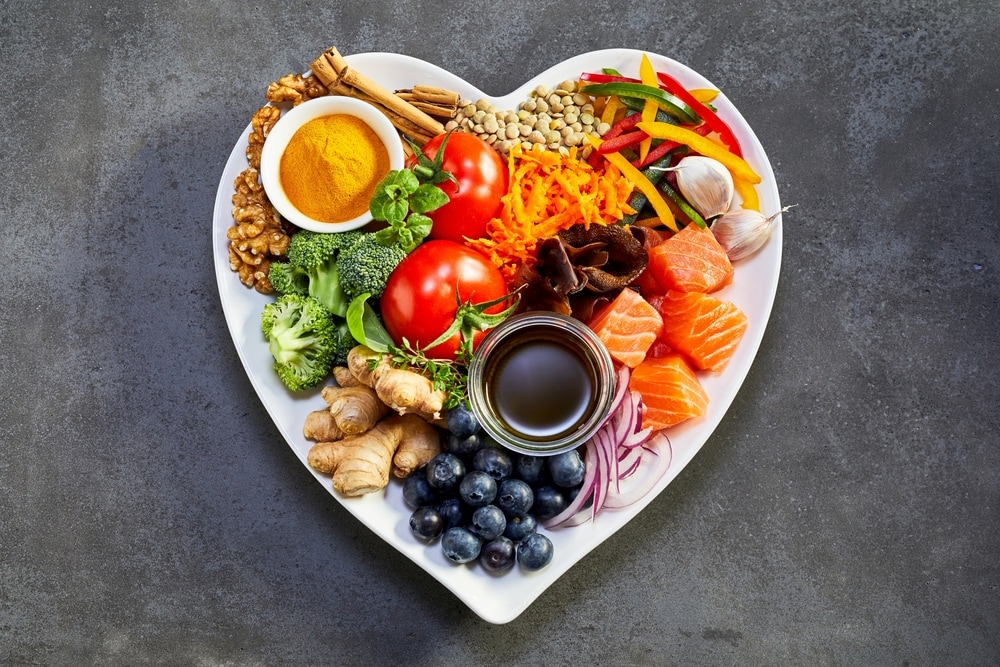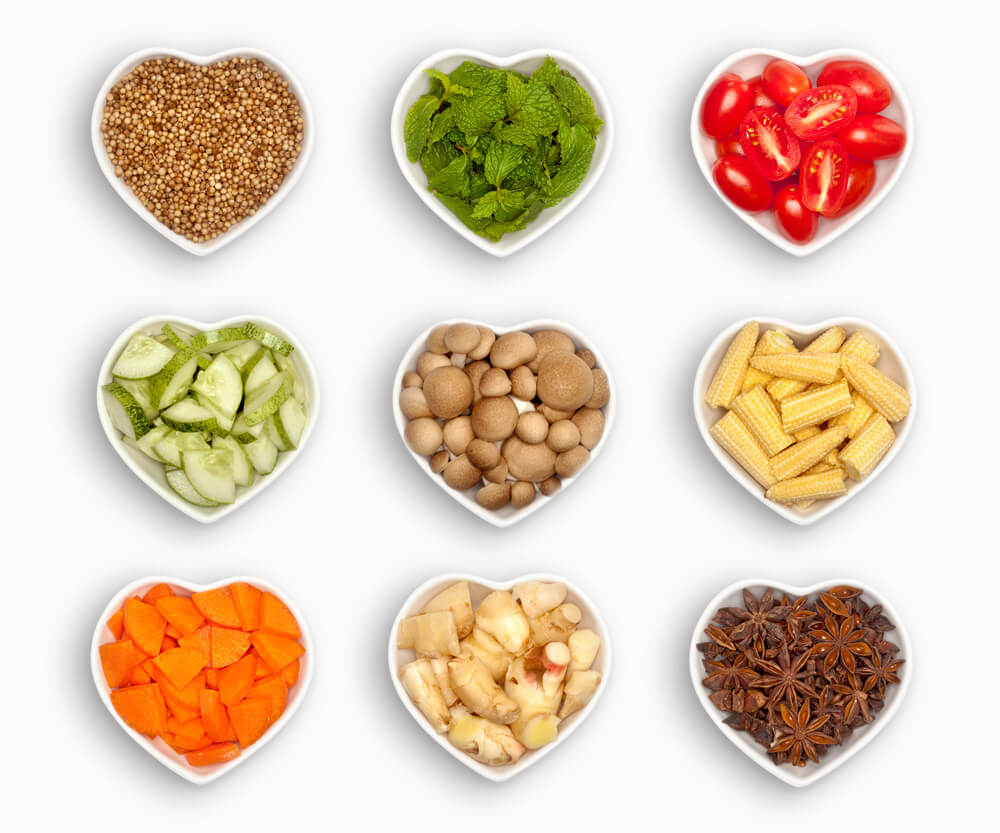Beating about 100,000 times a day, your heart is the hardest working organ in your body. Your nutrition and exercise choices have a huge impact on how well your heart keeps the beat.
To avoid heart disease, high blood pressure, and other chronic conditions, try these heart-smart nutrition tips
1. Right-size your meals
What does a healthy portion of cheese look like? Or chicken? Or apple? It’s hard to tell since the perception of portion size in America is skewed by the super-sized meals served at restaurants and fast-food establishments. Knowing healthy portion sizes is the first step to controlling the calories, sodium, and fat in your diet.
How?
Picture your plate — One simple way to manage portion size is to break your plate up into three sections: fill half with vegetables and fruits, one quarter with heart-healthy proteins like chicken and fish, and one quarter with fiber-rich carbs like whole-grain pasta.1
Use your hands — You already own two convenient portion sizing tools — your hands! A portion of vegetables is equal to one fist for women, two fists for men. Your palm represents a portion of high-protein foods like meat and beans, one palm-sized amount for women, two for men. Cup your hand, and that’s a portion of whole grains or potatoes, use one cupped hand for women and two for men.2
2. Shake the salt
Sodium is necessary for balancing the fluids and minerals in your system.3 A healthy amount of daily sodium is 1,500 milligrams (mg) per day, but most Americans eat more than twice that amount averaging more than 3,400 mg a day. Reducing salt intake is critical for lowering blood pressure and maintaining heart health. 4
How?
Cut processed foods – Most of the salt we eat doesn’t come from the saltshaker, it’s hidden in processed foods. In fact, more than 70 percent of the sodium most Americans eat comes from packaged goods. Some of the biggest culprits? Deli meat, highly processed breads, and soups. The easiest way to shake the salt from your diet is to eat less processed food.
Read the label — Take charge of your sodium intake by reading the nutrition labels on the processed foods you’re eating. Look for levels of “salt,” “sodium,” and “soda” and opt for products with “reduced salt” or “low sodium” on the label.5
3. Get Fresh
Replacing processed foods with fresh foods is an instant way to help cut salt, boost nutritional intake, and have an all-around healthier diet.
How?
Veg out — Vegetables are flexible nutrition powerhouses. They’re full of vitamins and minerals and can be prepared in all sorts of ways — fresh on salads, roasted in main courses, or cooked in soups and pastas. Aim for five servings of veggies a day. Fresh, canned, or frozen — they’re all good!
Choose fruit — Swap a snack bar or baked treat for fruit even once a day, and your heart will thank you. For best heart health, try to eat four servings of fruit a day. Fresh fruit is best. Small amounts of 100 percent fruit juice — one-fourth of a cup is a serving — are ok but watch out; fruit juice is high in sugar and calories.6
Mom's Meals® can help
Having heart-smart meals delivered to your door is another easy way to improve nutrition. Mom’s Meals delivers nutritionally-tailored meals — including lower-sodium and heart-friendly options — to homes nationwide.
Sources:
1. https://my.clevelandclinic.org/health/articles/17080-heart-healthy-meal-preparation
2. https://www.precisionnutrition.com/calorie-control-guide
3. https://www.hsph.harvard.edu/nutritionsource/salt-and-sodium/



